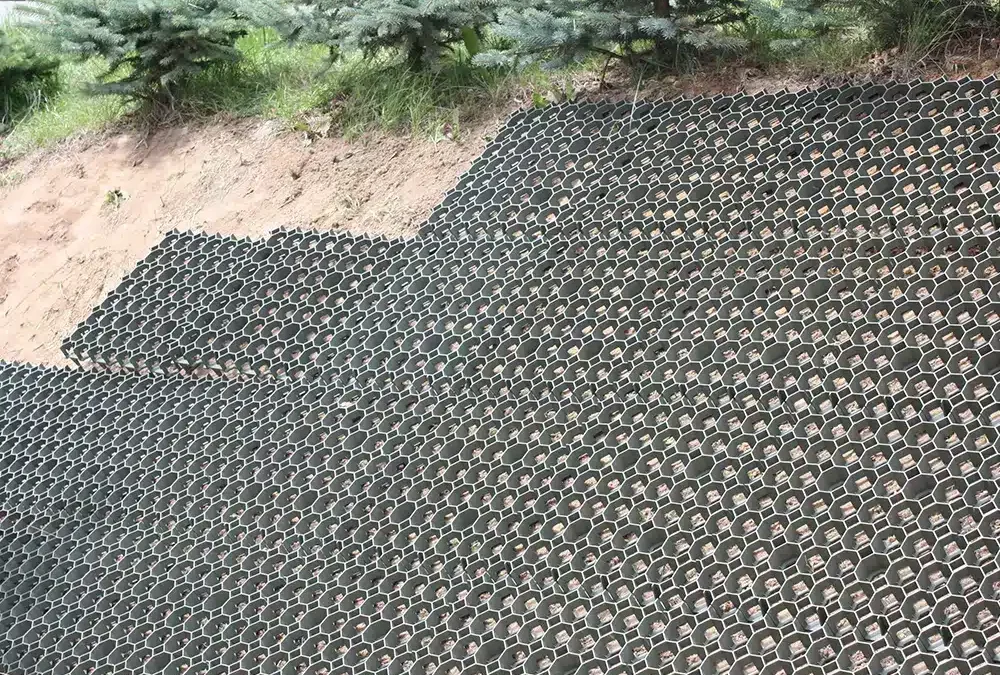Managing ground stability and protecting natural landscapes are critical considerations in both residential and commercial projects. Whether it’s for driveways, garden paths, parking areas, or commercial spaces, using an effective ground reinforcement solution can help maintain the aesthetic appeal and functionality of a surface while preserving the environment. Grass grid have emerged as a popular solution for these needs, offering a sustainable and efficient way to reinforce the ground without compromising on permeability or appearance.
Grass grids are designed to support high foot or vehicular traffic while allowing grass and other vegetation to grow naturally. Their open-cell structure provides stability, prevents soil erosion, and maintains drainage, making them an ideal choice for a variety of applications. With their durability and eco-friendly benefits, grass grids are increasingly being used in driveways, event spaces, pathways, and more.
What Are Grass Grids and How Do They Work?
Grass grids are modular plastic or composite systems that are laid on the ground to provide a firm, stable base for supporting loads. They are designed with interlocking cells that allow for easy installation and flexibility in shaping the surface to fit the area’s specific needs. Once installed, they can be filled with soil, gravel, or grass, creating a stable surface that blends seamlessly with the surrounding environment.
The structure of grass grids allows for weight distribution across the entire surface, preventing ruts and depressions caused by heavy loads or frequent use. This not only helps in maintaining a level and visually appealing surface but also reduces the impact on the underlying soil. Their permeable nature allows water to drain naturally, reducing surface water runoff and the risk of flooding, making them an ideal solution for sustainable landscaping projects.
Applications and Benefits of Using Grass Grids
Grass grids are versatile and can be used in a variety of settings, making them suitable for residential, commercial, and industrial applications. Some common uses include:
- Driveways and Parking Areas: Grass grids provide a stable surface for vehicles without compromising on drainage or aesthetics. They can support the weight of cars and trucks, making them a sustainable alternative to traditional paved surfaces.
- Pathways and Walkways: Whether for garden paths, pedestrian walkways, or public trails, grass grids offer a non-slip, durable surface that blends naturally with the surrounding landscape.
- Event Spaces and Temporary Access: Grass grids can be used to create temporary parking or access roads for events, protecting the underlying grass and soil from damage caused by heavy foot or vehicle traffic.
- Erosion Control: By stabilizing the ground and reducing the risk of soil displacement, grass grids help in erosion control, particularly on sloped or uneven terrains.
- Golf Courses and Sports Facilities: Grass grids can reinforce areas around golf courses, sports fields, and equestrian arenas, preventing wear and tear while maintaining a natural appearance.
The benefits of using grass grids go beyond ground stability. They help promote green spaces, support sustainable drainage, and reduce the need for impermeable paving materials, making them an eco-friendly choice for landscaping and construction.
Why Choose Grass Grids for Your Project?
Grass grids offer a range of benefits that make them an excellent choice for various applications:
- Environmental Sustainability: Made from recycled materials, many grass grids are eco-friendly and contribute to sustainable building practices. Their permeable design supports natural water filtration, reducing the risk of flooding and promoting healthy plant growth.
- Durability and Load-Bearing Capacity: Grass grids are engineered to handle heavy loads, making them ideal for both pedestrian and vehicular traffic. They distribute weight evenly, preventing soil compaction and maintaining surface integrity over time.
- Aesthetic Appeal: Grass grids allow for a natural grass finish that blends seamlessly with the environment, providing a green alternative to concrete or asphalt surfaces.
- Cost-Effectiveness: Compared to traditional paving methods, grass grids are cost-effective and require less maintenance, making them a smart investment for long-term use.
- Easy Installation: The modular design of grass grids makes installation straightforward, allowing for quick setup even on uneven or sloped surfaces.
Choosing the Right Grass Grid for Your Needs
When selecting a grass grid system, it’s important to consider the specific requirements of your project. Factors such as load-bearing capacity, grid thickness, and cell size will influence the performance and durability of the grid. For heavy-duty applications such as parking lots or access roads, opt for grids that are designed to support higher loads. For residential or garden use, lighter options may be more suitable.
Additionally, look for grass grids made from high-quality, UV-stabilized materials to ensure long-lasting performance and resistance to environmental conditions. Choosing a reputable supplier that offers a variety of grid options and professional advice can help you find the right solution for your project.
Conclusion
In conclusion, grass grids are a versatile and eco-friendly ground reinforcement solution that offers both practical and aesthetic benefits. They are ideal for a wide range of applications, from driveways and parking areas to garden paths and event spaces. By choosing the right grass grid system, you can create a stable and attractive surface that promotes sustainability and enhances the natural beauty of your landscape.



